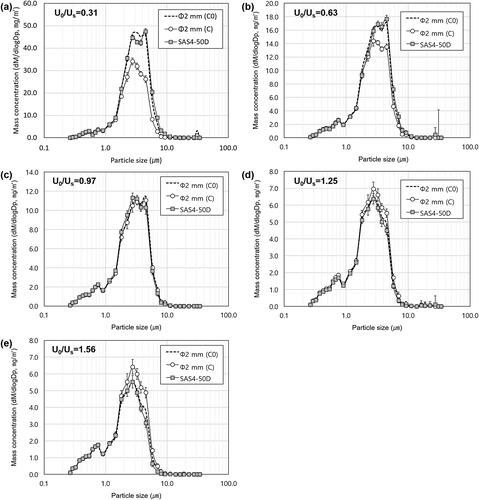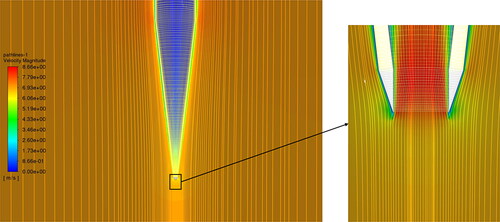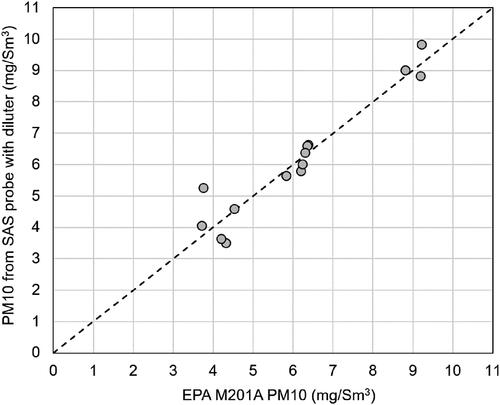Figures & data
Figure 1. Design of (a) the developed SAS probe and (b) a conventional sampling probe used in this study.
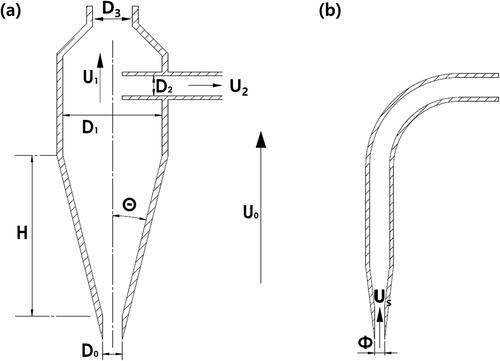
Figure 2. Schematic diagram of an experimental setup to measure particle concentrations using the SAS probe and a conventional probe with different duct flow velocities. Here, OPC is optical particle counter.
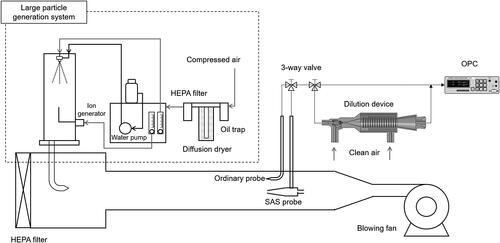
Figure 4. Particle mass concentration distributions for the SAS probe and conventional probe at isokinetic condition. The duct flow velocities (U0) are (a) 6.4 m/s, (b) 2.8 m/s, (c) 1.6 m/s, and (d) 0.7 m/s.

Figure 5. Particle mass concentration distributions of the conventional probe using a 4 mm nozzle (C), estimated value using EquationEquation (5)(5)
(5) obtained based on that of the conventional probe using a 4 mm nozzle (C0), and the developed SAS4-50D probe. The duct flow velocities are (a) 2 m/s, (b) 4 m/s, (c) 6 m/s, (d) 8 m/s, and (e) 10 m/s.
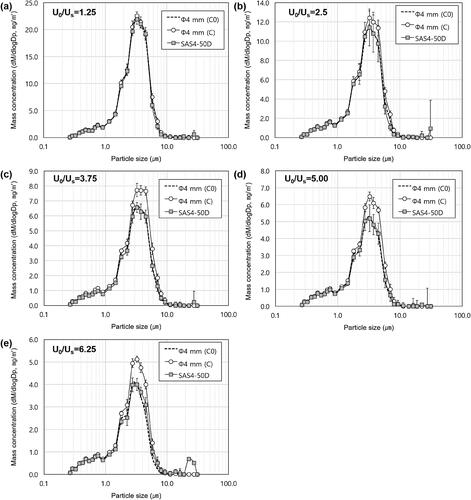
Figure 6. Particle mass concentration distributions of the conventional probe using a 2 mm nozzle (C), estimated value using EquationEquation (5)(5)
(5) obtained based on that of the conventional probe using a 2 mm nozzle (C0), and the developed SAS4-50D probe. The duct flow velocities are (a) 2 m/s, (b) 4 m/s, (c) 6 m/s, (d) 8 m/s, and (e) 10 m/s.
